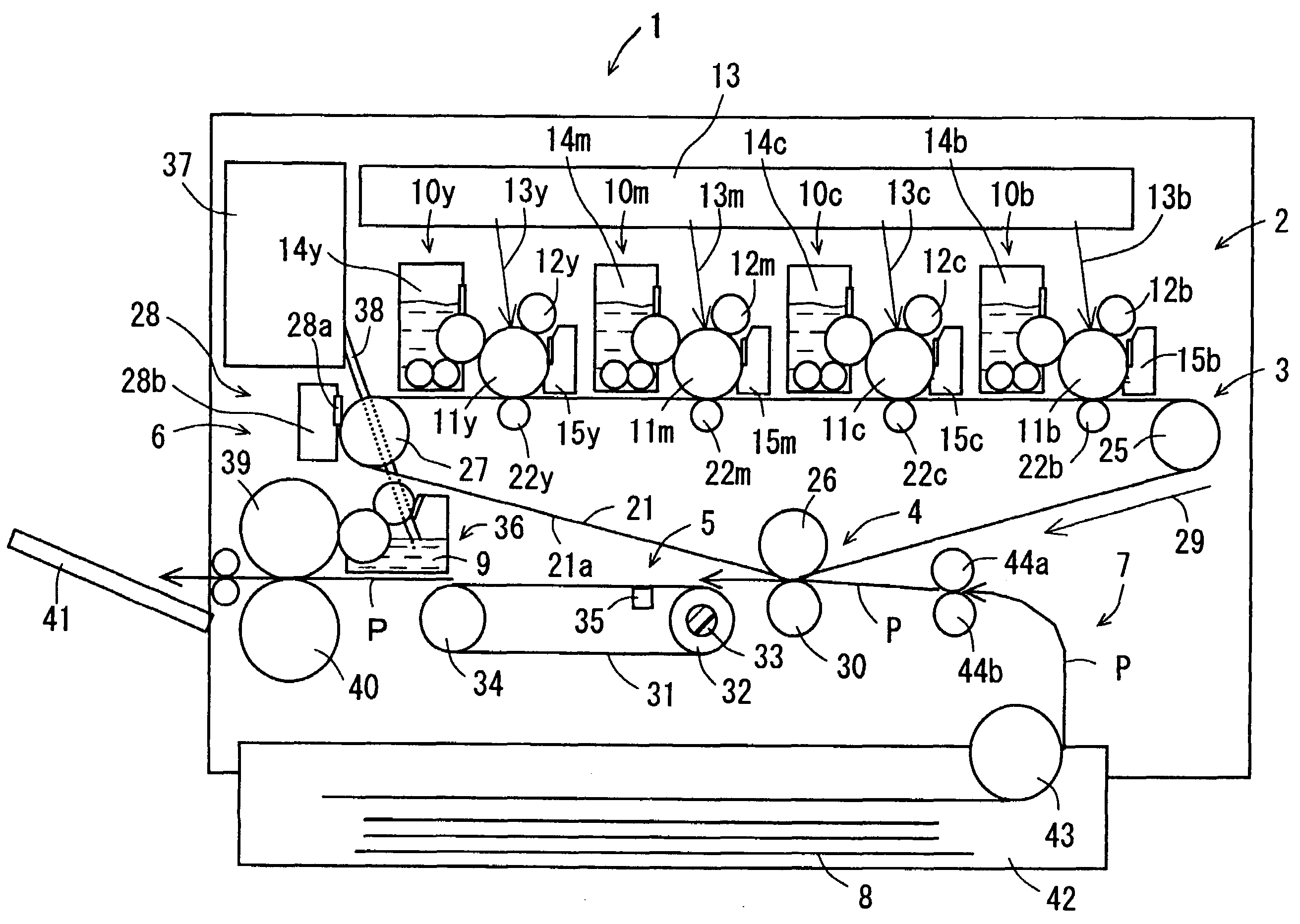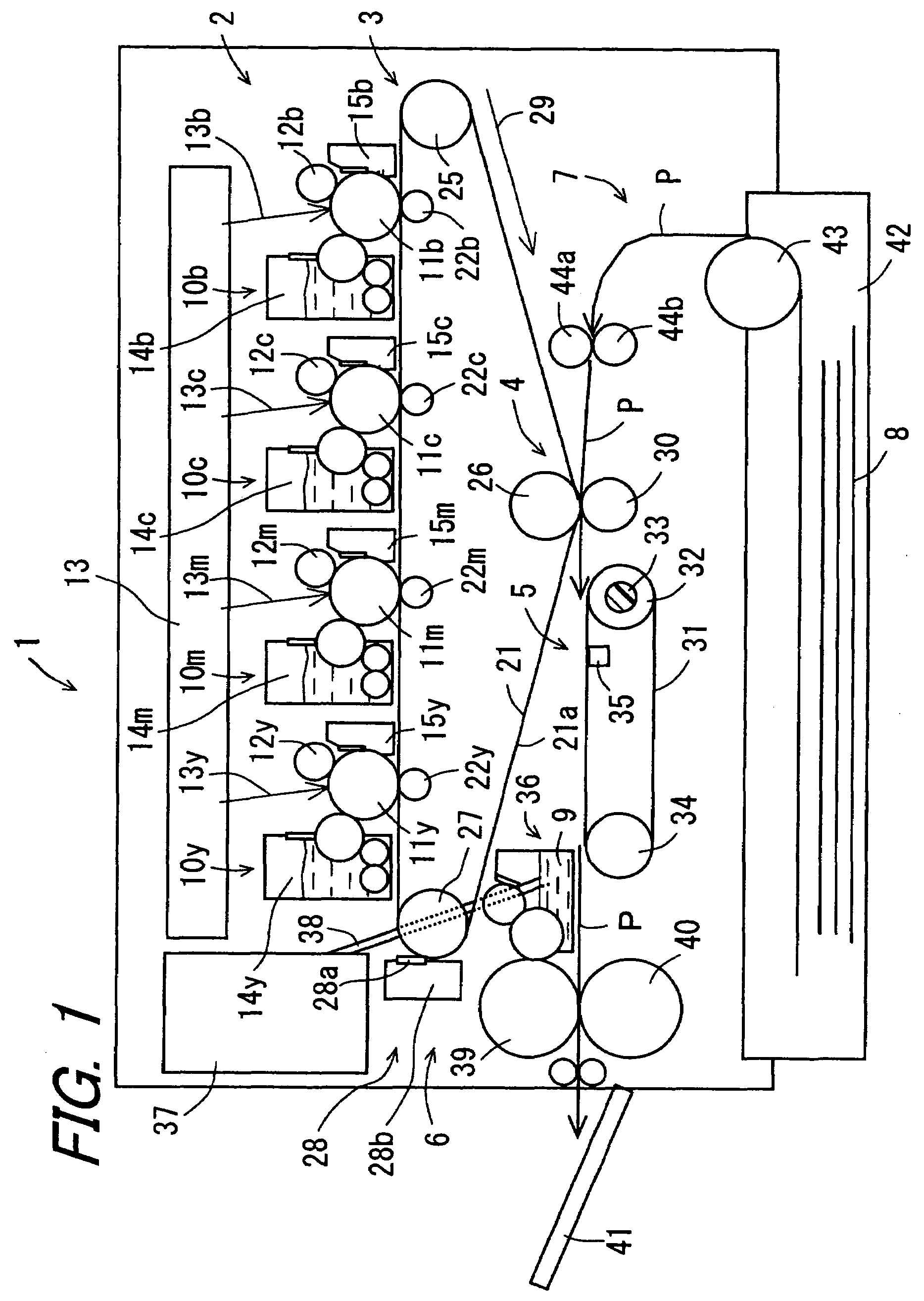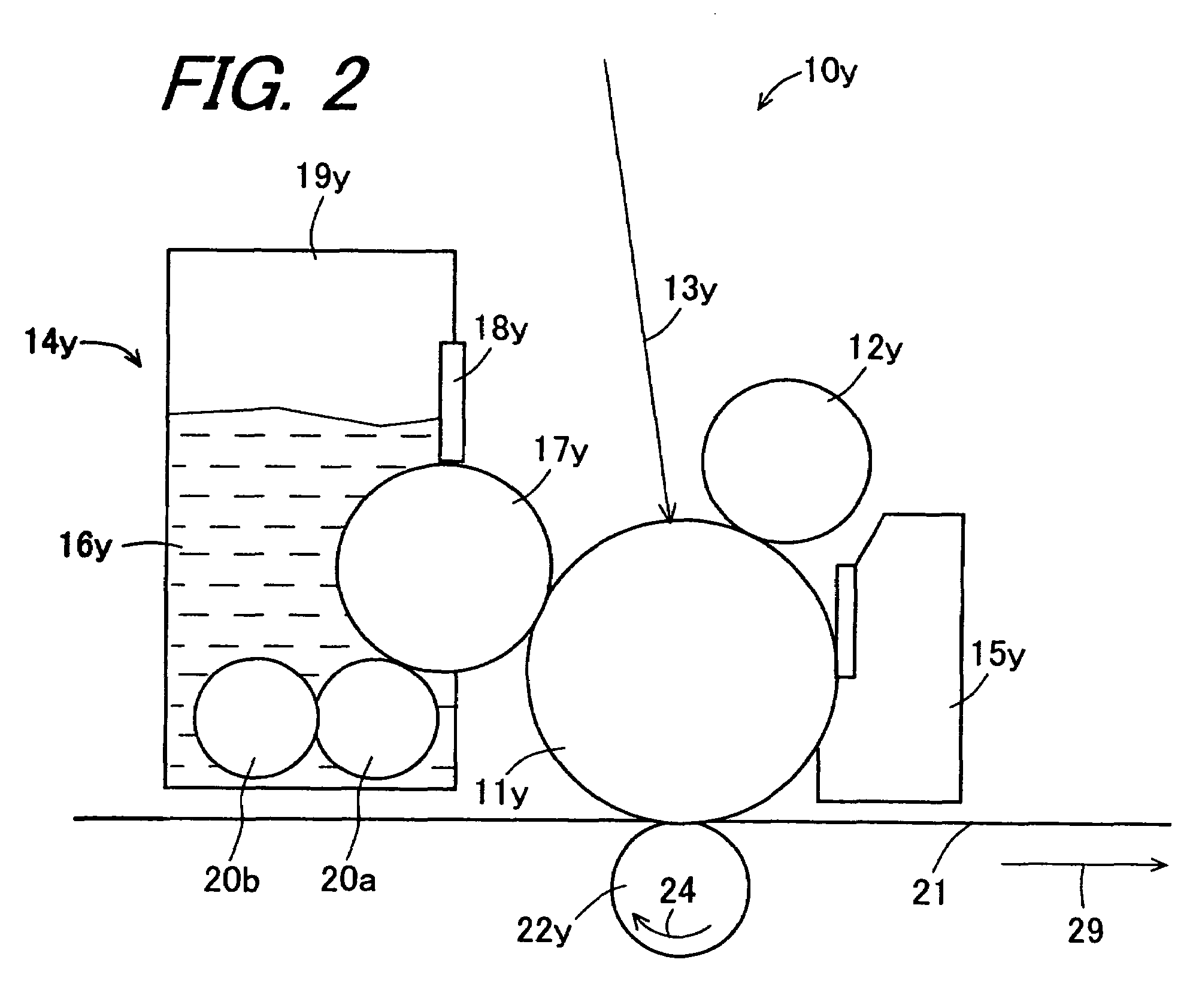Image forming apparatus employing heating and fixer fluid applying sections
a technology of heating fixation and forming apparatus, applied in the direction of electrographic process apparatus, instruments, optics, etc., can solve the problems of affecting the quality of the image, and causing the offset of the toner image, so as to prevent the phenomenon of offset
- Summary
- Abstract
- Description
- Claims
- Application Information
AI Technical Summary
Benefits of technology
Problems solved by technology
Method used
Image
Examples
Embodiment Construction
[0107]Now referring to the drawings, preferred embodiments of the presently disclosed technology are described below.
[0108]FIG. 1 is a sectional view schematically showing a configuration of an image forming apparatus 1 according to a first example embodiment of the presently disclosed technology. FIG. 2 is an enlarged sectional view showing a configuration of a substantial part (a toner image forming section 2 which will be described hereinbelow) of the image forming apparatus 1 shown in FIG. 1. FIG. 3 is an enlarged sectional view showing a configuration of the substantial part (a secondary transfer section 4, a heating section 5, and a fixer fluid applying section 6, which will be described hereinbelow) of the image forming apparatus shown 1 in FIG. 1. FIG. 4 is a sectional view schematically showing a configuration of a fixing roller 39.
[0109]The image forming apparatus 1 comprises a toner image forming section 2, an intermediate transfer section 3, a secondary transfer section ...
PUM
 Login to View More
Login to View More Abstract
Description
Claims
Application Information
 Login to View More
Login to View More - R&D
- Intellectual Property
- Life Sciences
- Materials
- Tech Scout
- Unparalleled Data Quality
- Higher Quality Content
- 60% Fewer Hallucinations
Browse by: Latest US Patents, China's latest patents, Technical Efficacy Thesaurus, Application Domain, Technology Topic, Popular Technical Reports.
© 2025 PatSnap. All rights reserved.Legal|Privacy policy|Modern Slavery Act Transparency Statement|Sitemap|About US| Contact US: help@patsnap.com



